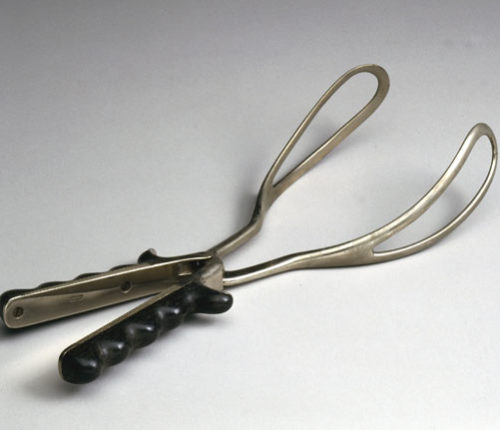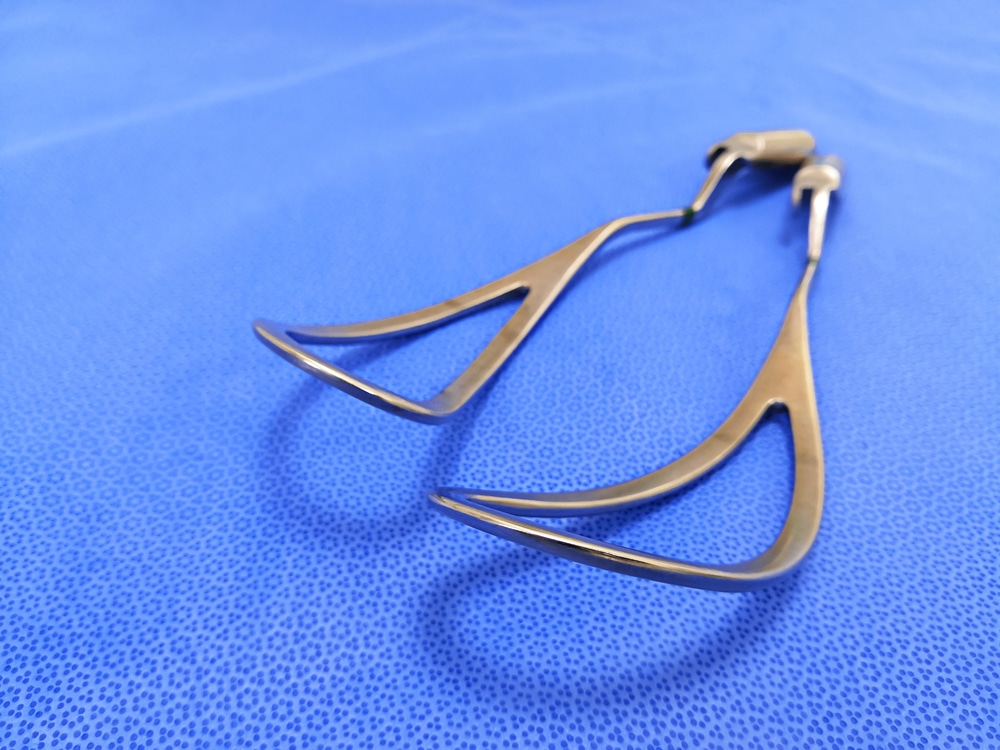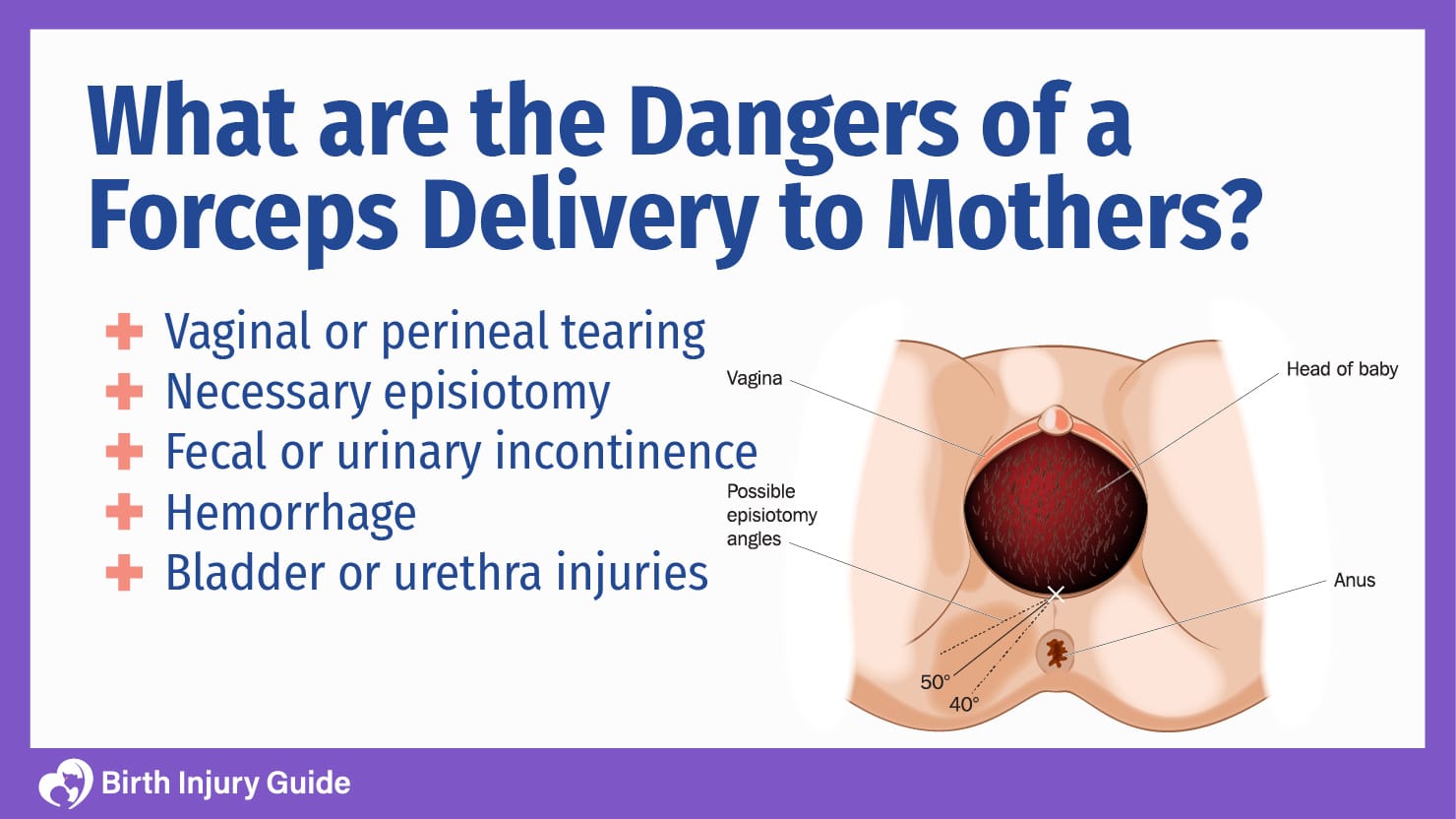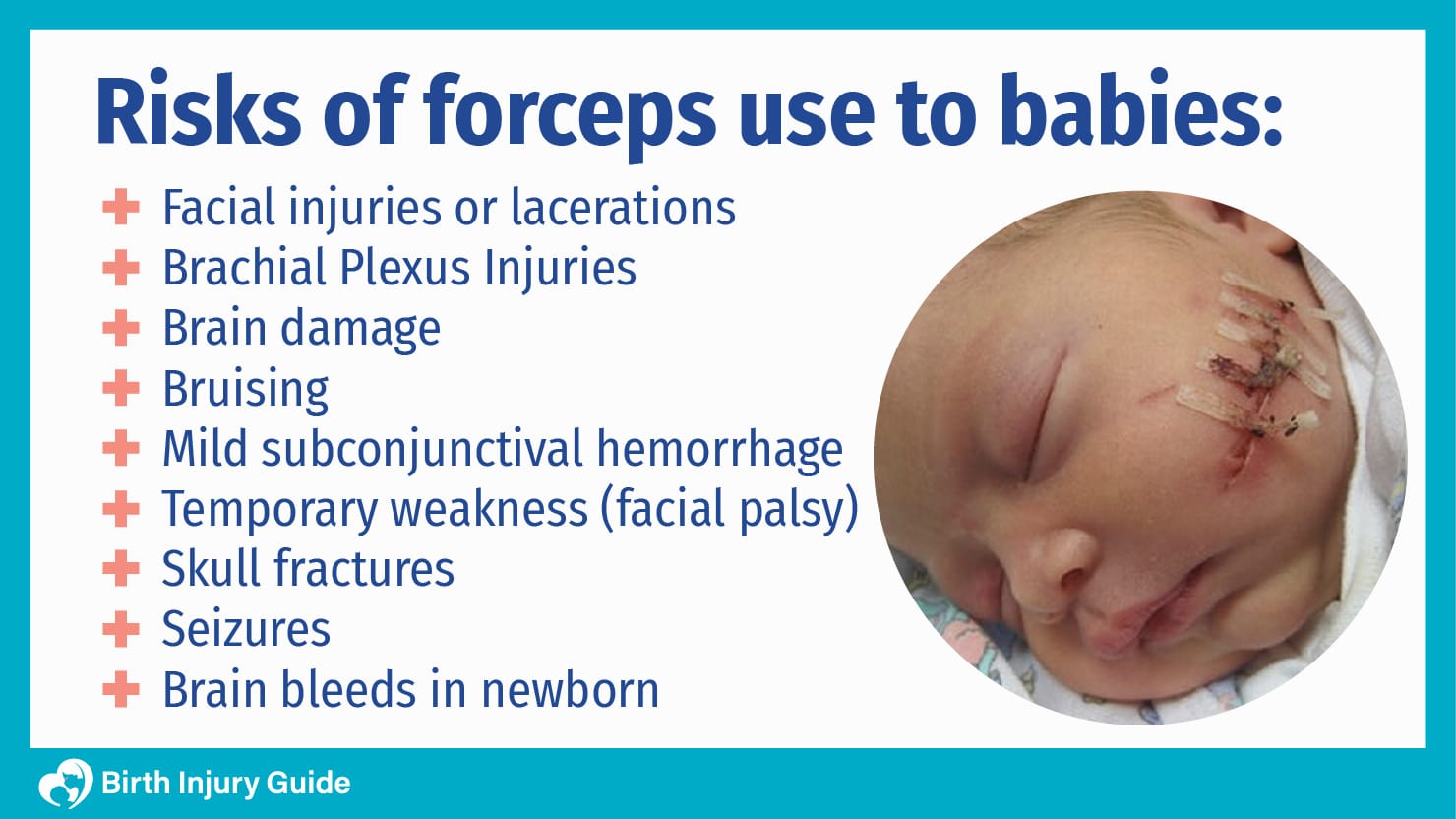
Why are Forceps Commonly Linked to Birth Injuries?
Forceps are often used during labor and delivery to assist with the birthing process. Unfortunately they are frequently linked to birth injuries as well, which raises the question, Why are forceps commonly linked to birth injuries? Forceps – a common tool in operating rooms – may seem like a helpful tool. Unfortunately, if they are used improperly, they can cause a variety of birth injuries and other problems.
Below, we explain more about forceps, how and why they are used, and the ways they can cause birth injuries. As always, if you have questions about birth injuries, contact Birth Injury Guide to speak with a lawyer who specializes in birth injury cases.
What are Forceps?
Forceps are a birth-assisting tool shaped similar to large spoons or salad tongs. The cups are curved and have openings in the middle. There are more than 700 types of forceps developed for use during labor and delivery. Some are designed generally, and others are designed for specific childbirth situations. There are even designs that are useful during Cesarean sections, or c-sections. Hospitals usually keep several varieties on hand in case assistance is needed during childbirth.

While there are hundreds of different types of forceps, there are a few types that are most commonly used during labor and delivery. Each type are specially designed to minimize the risk of birth trauma or birth injuries. The most common types of obstetrical forceps are:
Elliot
Elliot forceps have a round curvature. They are designed for use during vaginal delivery when the baby’s head is round. Doctors use these tools by cradling the baby’s head and applying gentle pressure to pull the baby down the birth canal.
Kielland
Kielland forceps have a shallow pelvic curve. There is a sliding lock that holds them in position. These are most often used when the baby needs to be rotated in the birth canal. It is safest for the baby to be delivered face-down, or in the cephalic or occiput anterior (OA) position. This position makes it easier for the baby to tuck their chin as they make their way down the birth canal.
Piper
Piper’s forceps have stems that curve downward. They are designed to fit around the underside of the baby’s body. These are designed to help doctors who are working with a breech delivery. Piper forceps are only used to assist breech deliveries. They are applied to help keep the head flexed during delivery. One healthcare provider must hold the baby’s body while the other applies the forceps.
Simpson
Simpson forceps have a long cephalic curve. They are designed for use when the baby’s head is compressed in the birth canal and becomes cone-like in shape. Parents may be alarmed at the cone-like shape, but that is normal in many deliveries.
Wrigley
Wrigley’s forceps are shorter and the blades are designed to reduce the risk of uterine rupture. These are most often used once the baby has moved far into the birth canal. They are also the most common forceps used during c-section deliveries.
Why Forceps are Used in Delivery
Forceps are used during delivery to assist the mother in birthing the child. This device looks something like a large pair of spoons, and are designed to “cup” the baby’s head to guide it through the birth canal. This is most often done when there are difficulties with the birth process, such as:
- Labor is stalled despite cervical dilation and pushing
- The baby’s heartbeat or vital signs suggest complications
- The mother’s health becomes compromised
- The mother has underlying conditions affecting her ability to deliver naturally
- The baby is turned in the wrong direction (breech)
Generally, when labor and delivery becomes complicated or the health of mother and child are compromised, a cesarean section (c-section) may be a better option to avoid further complications or injuries. Discuss these options with your healthcare provider to determine what is best for you and your baby. You do not have to include forceps as part of your birthing plan. If you are uncomfortable with the use of forceps, make your feelings known to your healthcare provider.
What to Expect if Forceps are Used During Delivery
If your doctor advises you that forceps are necessary and/or the best option, you may wonder what exactly that means. Chances are, you are already laying down, and you may have your legs spread in the stirrups. You will remain in this position while you continue to push, and while the doctor uses the forceps. Here is what you can expect is happening during this process:
- The doctor will insert several fingers into the vagina to feel for the baby’s head.
- Once the head is located, the forceps will be placed around either side of the baby’s head.
- If the forceps have a lock, the doctor will lock them in position to gently grip the baby’s head.
- During your next contraction, your doctor will encourage you to push. They will use the forceps to guide the baby down the birth canal.
- If necessary, the doctor will rotate the baby so they are facing downward.
If the doctor attempts using forceps in this way, but is unsuccessful, they may stop using the forceps. Instead, the doctor may attempt to use a vacuum extractor.
Risks Associated with Forceps Use
One of the primary reasons why forceps are commonly linked to birth injuries is because improper use can quickly make an otherwise smooth delivery go horribly wrong. Coupled with the fact that they are present in most delivery rooms, the risks associated with forceps use increase even more.
Using forceps during delivery can cause birth injuries to both the mother and child.
Risks to the mother include:

- Uterine rupture or tear
- Injuries to the urethra or bladder
- Difficulty urinating or emptying the bladder
- Incontinence or loss of bladder control
- Tears or injuries to the genital tract
- Pain in the genital area
- Blood loss resulting in anemia
- Weakened ligaments or muscles in the pelvis and pelvic organs
- Anemia (lack of red blood cells)
Many of these risks are also associated with vaginal births in general, but the risk of suffering these birth injuries (or others) increases when forceps are used. If you plan to attempt a vaginal birth, talk to your doctor about what you may can expect, and what the possible risks are. Good and consistent prenatal care is the best way to prevent possible birth injuries and ensure that you and your baby have the best care possible.
Risks of forceps use to babies include:

- Facial injuries or lacerations
- Brachial Plexus Injuries
- Brain damage
- Bruising
- Mild subconjunctival hemorrhage
- Temporary weakness (facial palsy)
- Skull fractures
- Seizures
- Brain bleeds in newborn
A Note about Infant Brain Damage
Improper use of forceps can cause birth injuries that damage the brain. Furthermore, using forceps to attempt to force delivery when a c-section would be safer, could also lead to oxygen deprivation and brain damage. In either case, brain damage can impact your child’s life in tremendous ways. It is one of the more common factors in children developing cerebral palsy. Cerebral palsy is a group of motor disorders that affect thousands of children each year. Cerebral palsy causes difficulty with movement, posture and balance.
Children with cerebral palsy require a great deal of care. They often struggle with developmental delays, cognitive issues, and behavioral disorders. There is no cure for cerebral palsy, but there are treatment options. Most often, treatment is consistent and will continue throughout the child’s life. In these cases, birth trauma means more than a birth injury – it is a lifelong ordeal.
What You Should Know About Forceps Use and Medical Negligence
Improper use of medical tools is not acceptable. In fact, it is medical negligence. Healthcare providers must use tools and equipment in the appropriate way. There are medical standards for almost every diagnosis and type of procedure. When providers fail to meet those standards, they may be risking your health and violating your legal rights. When that happens, you have the right to pursue compensation for your injuries and related financial losses.
If you are injured by medical negligence, you may be able to pursue compensation for related medical expenses, loss of income, pain and suffering, future care, and more. This compensation can be extremely helpful if your child requires ongoing medical care, therapies, special equipment, medications, or daily supervision due to their birth injury. Even more so if you or a loved one are having to leave their jobs in order to stay home with your child.
If you or your child were injured due to improper use of forceps or other labor and delivery tools, contact Birth Injury Guide to discuss your case. Our birth injury lawyers will review the details of your situation and help you explore your legal rights.
Start Your FREE Case Review Today
If you or your child is injured as a result of medical negligence, call us to learn more.
Forceps Injuries Cause Permanent Damage
In addition to the risks mentioned above, there are cases where forceps use causes significant birth injuries or permanent disability to the baby. Consider, for example, a recent medical malpractice lawsuit in Nebraska. In 2010, a Nebraska family went to Methodist Women’s Hospital for the birth of their son.
According to the lawsuit, during labor, the doctor and midwife ignored breathing problems resulting in the infant’s health deteriorating. Further, during delivery, forceps were improperly used, resulting in brain damage. The child suffered permanent damage and is permanently disabled from the birth injuries he sustained.
After years of fighting for justice, in October 2016, the child’s family was awarded $11.5 million by a jury. The $11.5 million award will no doubt help cover medical expenses associated with the birth and injuries, as well as providing financial support for the ongoing care of the child’s disabilities.
The hospital has strongly contended that there was no malpractice involved, but that the child suffered a stroke unrelated to the use of forceps. The lawsuit, however, alleged that evidence proving the misapplication of forceps, as well as electronic patient records were found to have been tampered with during the investigation. This information was said to be key to the jury’s decision in favor of the family.
Permanent Damage and Your Future
Like the family in our example case, the future of your family can change dramatically if your child is injured during birth. Even in the mildest circumstances, birth injuries are traumatic. In severe cases, your child’s future may be completely altered. When forceps are used improperly, your child could suffer severe birth injuries to the neck, spine, or brain. These severe injuries could result in the following:
- Nerve damage to the face is a birth injury that may result in the child’s facial features being permanently damaged or asymmetrical.
- Spinal cord injury, which may result in partial or complete paralysis. These serious birth injuries often require long-term, or even lifelong continuing care.
- Brachial plexus injury, which is caused by pulling and stretching of the shoulder, arm and/or head.
- Brain damage caused by forceps may be severe enough to cause damage to the cerebrum, which can lead to cerebral palsy. The cerebrum is the part of the brain responsible for motor functions, sensory processing, speech, language, and movement.
Getting Help after a Birth Injury
If your child suffered a birth injury, you may feel overwhelmed as you move through the process of getting medical care, arranging financial support, and planning for your child’s future. You may also feel angry about finding yourself in this situation, but are unsure of how to pursue justice for your family. Medical errors and medical negligence are simply unacceptable. Healthcare providers must be held accountable when their actions cause harm to patients.
If you or your child are the victim of a birth injury, you need support and legal guidance that works for your family and has your best interests at heart. At Birth Injury Guide, our medical malpractice and birth injury attorneys know too well the difficulties you are facing. We work with clients just like you every day in the fight for justice after needless birth injuries.
If you would like to speak with our team about your birth injury situation, contact us today to learn more. With a free consultation, you can learn more about your legal rights, options to support your family, and find out what you can do to pursue justice. Fill out the form on your screen to get started with a no-obligation case review of your birth injury claim.
Sources
- http://www.cerebral-palsy-faq.org/questions/can-the-rough-handling-of-forceps-during-delivery-lead-to-neurological-injury/
- http://www.mayoclinic.org/tests-procedures/forceps-delivery/basics/risks/prc-20014741
- http://www.omaha.com/livewellnebraska/jury-awards-million-to-omaha-couple-in-medical-malpractice-lawsuit/article_e0dc28e6-9b05-11e6-aeb1-0325d33f0cf9.html

